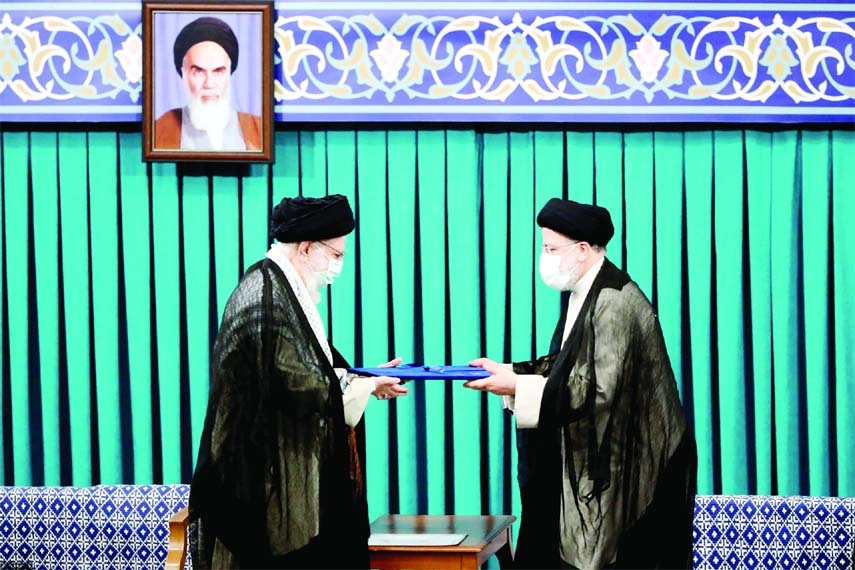
News Desk :
The cleric, Ebrahim Raisi, won a June election that had disqualified any potential rivals. Critics said Raisi’s victory had been engineered to reflect the choice of his mentor and ally, Iran’s supreme leader, Ayatollah Ali Khamenei. The New York Times has reported.
The election called attention to the role of Iran’s president in a system of governance dominated by clerical leaders since the Islamic Revolution that overthrew the US-backed monarchy more than four decades ago.
Although the system contains some checks and balances, power has been increasingly concentrated in the hands of the supreme leader, who under Iran’s Constitution has more authority than the president.
Here’s a closer look at the president, and the powers he does – and doesn’t – possess.
Who is Raisi?
Until last month, Raisi, 60, was the head of Iran’s judiciary. He spent much of his career as a prosecutor and is on a US sanctions list over his human rights record. In 1988, he sat on a committee that sent about 5,000 imprisoned government opponents to their deaths, according to human-rights organizations.
He is a protégé of Khamenei, 82, who is largely responsible for Raisi’s ascendance. They share a deep suspicion of the West in general and antipathy toward the United States in particular. Raisi is believed to be Khamenei’s main choice to succeed him.
Previous presidents often disagreed with supreme leaders – up to a point – but Raisi could become the most like-minded person yet to hold the post.
What is Iran’s system of governance?
Iran’s government is separated into executive, legislative and judicial branches, and it holds elections for the president, members of Parliament and local officials. But it is also governed by an Islamic clerical hierarchy that oversees the civilian administration. Much of that hierarchy’s power is vested in the Guardian Council, a group of 12 men. Half are clerics appointed by the supreme leader, and half are lawyers chosen by Parliament on recommendations from the judiciary head – who is also appointed by the supreme leader. The council vets all laws passed by Parliament and approves all candidates for president, giving it enormous control.
The supreme leader is chosen by a special body of clerics known as the Assembly of Experts. Although that group is an elected body, candidates for membership must also be vetted by the Guardian Council.
Who devised this system?
The original structure was devised by Iran’s first supreme leader, Ayatollah Ruhollah Khomeini, a once-exiled cleric who rode a wave of widespread anger in ousting Shah Mohammed Reza Pahlavi and his repressive monarchy in the 1979 revolution.
Khomeini created a hybrid system for the new Islamic Republic of Iran that enshrined religion at the centre of its identity. It is “one part unelected, one part elected – the Republic part,” said Mohsen Milani, an Iran scholar who is the executive director of the Centre for Strategic & Diplomatic Studies at the University of South Florida.
The constitution drafted under Khomeini’s tenure made clear he was the top person in charge, with the power to dismiss the president. But under Khamenei, who served as president under Khomeini and succeeded him after his death in 1989, the constitution was amended to give the supreme leader even more power.
What exactly can the supreme leader do?
He is the commander of the armed forces, including the Revolutionary Guard, a paramilitary force that exerts extensive control inside the country. He can declare war and pardon prisoners. He has the final say on all national security and foreign policy matters, most notably on Iran’s nuclear agreement with foreign powers that is now at risk of collapse.

